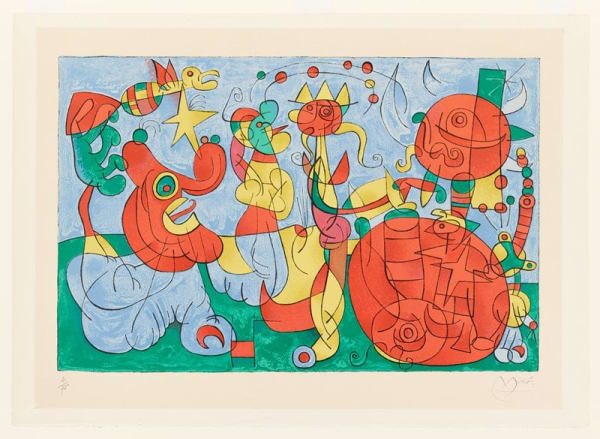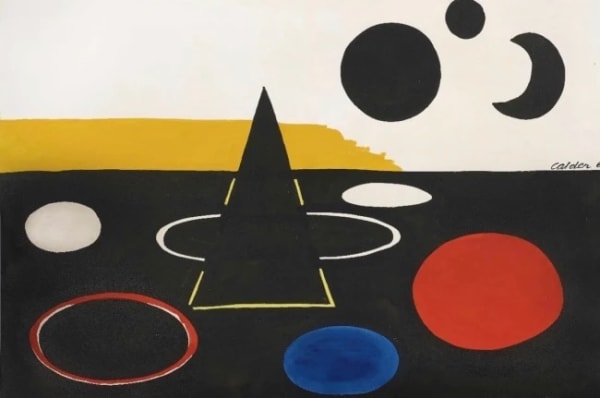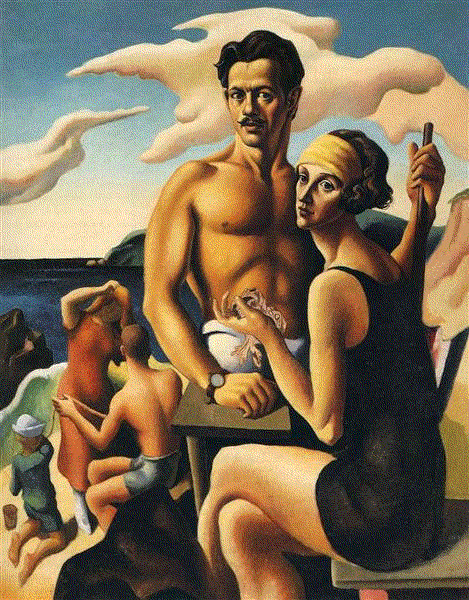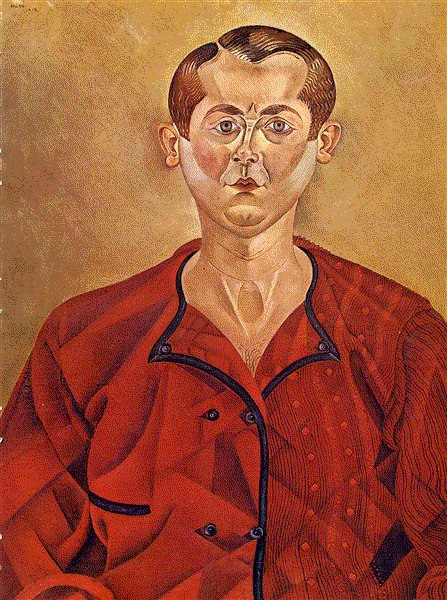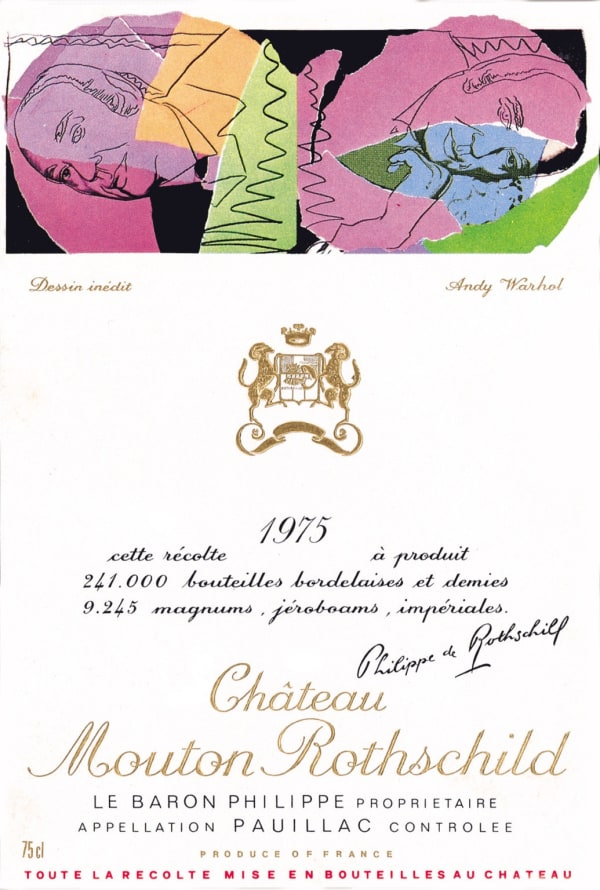Joan Miró
“The more ignoble I find life, the more strongly I react by contradiction, in humor and in an outburst of liberty and expansion.”
— Joan Miro
EARLY LIFE AND EDUCATION
Spanish painter, printmaker and sculptor, Joan Miro, was born in Barcelona in 1893. Miro’s father owned a jewelry store and wanted his son to go into business. Miro attended the Barcelona School of Commerce and also took classes at the Fine Art Academy, over the objections of his father. When he was eighteen, Miro contracted typhus and also fell into a severe depression. The family sent him to recover on a farm they owned, near the village of Montroig. Miro began to paint seriously in Montroig, and returned to the farm every summer.
Miro had his first solo exhibit at the avant-garde Galeries Dalmau in Barcelona. The show was not a success and Miro’s paintings were ridiculed. Miro went to Paris in 1920, where he met some of the artists and writers of the Dada movement. His paintings became bolder and more surreal, often including ladders reaching from the earth to the sky, as a symbol of possible means of escape at a tumultuous time in Spain. Miro’s work became progressively more surreal, responding to the Depression, war and political unrest that plagued Barcelona and the rest of Europe.
CAREER AND FAMILY LIFE
Miro married Pilar Juncosa 1929. Their daughter, Dolores, was born in 1931. The family lived in Paris, visiting Barcelona during the summer months, until the rise of Franco and the ensuing Civil War. Miro began his Constellation Series during this time.
In 1940, Miro and the family left Paris, which was under German siege, and went to Mallorca, to the home of his wife’s parents. MoMA presented a retrospective of Miro’s work in 1941, which led to commissions, including a mural for the UNESCO headquarters in Paris. Miro was always outspoken about the war and the unrest that had plagued his country for so long.
There was a two-year period of time, in the 1950s, when Miro stopped painting and worked on ceramics and prints. He built a home and studio in Mallorca in 1957, where he completed some of his finest work. Miro worked every day, until his death, at his Mallorca home in 1983, at the age of 90.
LEGACY
After the death of Franco, in 1975, King Juan Carlos established a constitutional monarchy. In 1980, the king awarded Miro the Gold Medal for Fine Art. A museum in Barcelona and his home and studio in Mallorca are both dedicated to Miro’s work. Joan Miro’s work Peinture (Etoile Bleue) sold for more than £23.5 million ($34.2 million) in London, in 2012, which set a new auction record for the Miro’s work.
Send me more information on Joan Miró
-

Calder’s Circus at 100. Scott Kelley’s Upsidaisium Series at Surovek Gallery
Frank Stella Pushed Boundaries December 12, 2025The Whitney is celebrating the centennial anniversary of Alexander Calder’s circus-themed sculptures and drawings. Calder (1898–1976) began creating the works in 1926, when he was...Read more -

Recent Acquisition: Hunt Slonem's Hyacinth Habitat
Hidden Portrait Found Under a Work by Joan Miró June 27, 2025Hunt Slonem (b.1951) was born in Kittery, Maine. His father was a Naval officer and was stationed in Hawaii, California and other places where Slonem...Read more -

Thomas Hart Benton and Loie Hollowell at the Hirshhorn
November 14, 2024I have a sort of inner conviction that for all the possible limitations of my mind and the disturbing effects of my processes, for all...Read more -

A Thimbleful of Red at Surovek Gallery
November 9, 2024A thimbleful of red is redder than a bucketful. - Henri Matisse An exhibit at the Nassau County Museum of Art called Seeing Red: Renoir...Read more -

Works by Joan Miró Attract Young Art Collectors
September 13, 2023As regards my means of expression, I try my hardest to achieve the maximum of clarity, power and plastic aggressiveness; a physical sensation to begin...Read more -

Wine Labels by Some of Our Favorite Artists
January 25, 2022A warm glow from a fireplace and a glass of red wine can ease the cold of a winter night…even better if the wine bottle...Read more -

Joan Miro and Roy Lichtenstein at Surovek Gallery
July 14, 2021Joan Miro 1893-1983 You can look at a picture for a week and never think of it again. You can also look at the picture...Read more -

Recently Acquired Joan Miró and Dale Nichols
May 25, 2021Among our recent acquisitions are works by some of the most influential artists in the world. All of them are American, with the exception of...Read more -

Joan Miro Artwork at Surovek Gallery
June 19, 2019The Museum of Modern Art is closing for a few months in order to expand and create new galleries and new spaces for performance art....Read more -

Palm Beach Art Galleries
June 12, 2019In 1879, New York industrialist and oil tycoon, Henry Flagler, visited Florida and envisioned the creation of an American Riviera. It was the right time,...Read more -

Joan Miró’s The Reaper: A Political Education
May 24, 2019The world looked to Spain. The Spanish Civil War had begun in 1936 when Francisco Franco and the fascists attempted to overthrow the Republic under...Read more -

Joan Miro, Hemmingway and The Farm in Paris
September 26, 2018A retrospective of the work of Joan Miro is opening next week at the Galeries Nationales of the Palais in Paris. Over 150 works, spanning...Read more -

Sensitive to the World
August 29, 2017“The artist does not live in bliss.” wrote Joan Miro. “He is sensitive to the world, to the pulsation of his time, to the events...Read more


